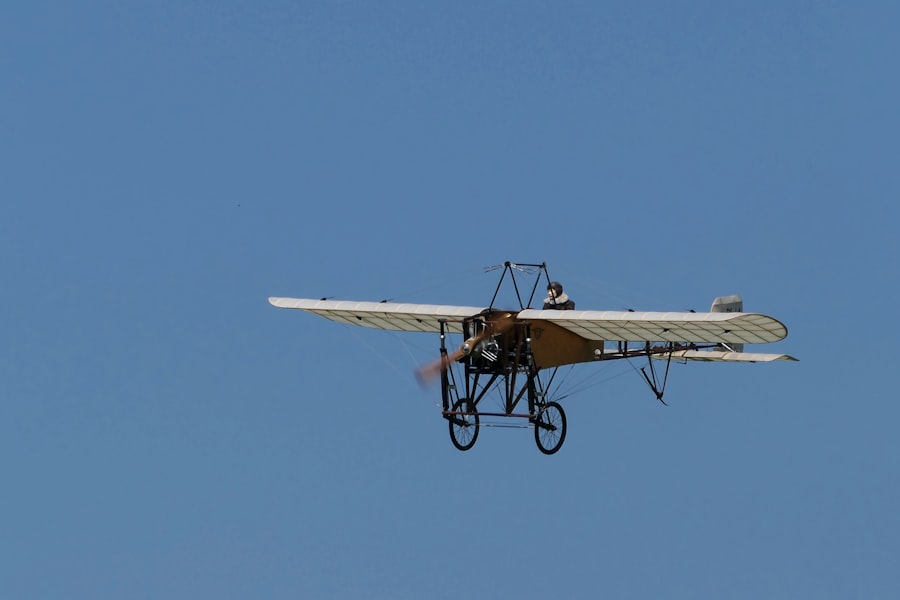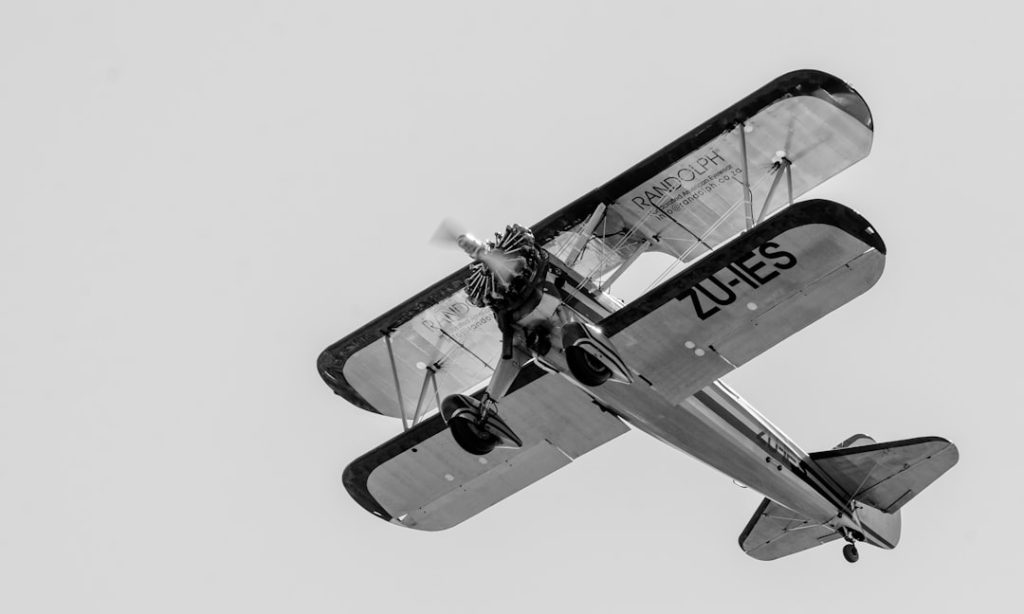Charles Lindbergh, an iconic figure in the annals of aviation history, was born on February 4, 1902, in Detroit, Michigan. His early life was marked by a fascination with flight, which was nurtured by his mother, a schoolteacher, and his father, a U.S. Congressman. This environment fostered a sense of curiosity and ambition that would later propel him into the limelight. Lindbergh’s childhood was characterized by a blend of academic pursuits and hands-on experiences, including building model airplanes and attending airshows. By the time he reached adulthood, he had developed a profound understanding of aerodynamics and engineering, which would serve him well in his future endeavors. Lindbergh’s journey into aviation began in earnest when he enrolled in the University of Wisconsin, where he studied mechanical engineering. However, his passion for flying soon took precedence over his academic pursuits. He enlisted in the U.S. Army Air Service as a flying cadet and earned his pilot’s license in 1925. This pivotal moment marked the beginning of a career that would not only change his life but also alter the course of aviation history. Lindbergh’s relentless pursuit of innovation and excellence would soon lead him to undertake one of the most daring feats of the 20th century: a solo transatlantic flight that would capture the world’s imagination.
Key Takeaways
- Charles Lindbergh was a pioneering aviator known for his historic transatlantic flight in 1927.
- His solo flight from New York to Paris made him an international hero and a symbol of aviation achievement.
- Lindbergh’s impact on aviation was significant, as he inspired a new era of air travel and technological advancements.
- Despite his achievements, Lindbergh’s controversial legacy includes his views on eugenics and isolationist politics.
- During World War II, Lindbergh’s role as an aviation consultant and controversial political stance led to mixed opinions about his contributions.
Lindbergh’s Historic Transatlantic Flight
On May 20, 1927, Charles Lindbergh embarked on a journey that would etch his name into the annals of history. He piloted the Spirit of St. Louis, a custom-built monoplane designed specifically for long-distance flight, from Roosevelt Field in New York to Le Bourget Field near Paris, France.
The flight covered approximately 3,600 miles and was fraught with challenges, including treacherous weather conditions and the physical toll of flying solo for over 33 hours. Lindbergh’s meticulous preparation and engineering acumen were evident in the design of the Spirit of St. Louis, which featured a large fuel tank to accommodate the extensive journey and a unique layout that prioritized aerodynamics.
As he soared across the Atlantic Ocean, Lindbergh faced numerous obstacles that tested his resolve and skill as a pilot. The vast expanse of water below him was both awe-inspiring and intimidating, and he had to rely on his instincts and navigational skills to stay on course. The flight was not without its moments of peril; at one point, Lindbergh experienced severe fatigue and disorientation, leading him to question whether he would complete the journey.
However, his determination prevailed, and on May 21, 1927, he landed safely in Paris to a hero’s welcome. This monumental achievement not only made Lindbergh an international celebrity but also symbolized the dawn of a new era in aviation, inspiring countless individuals to pursue their dreams of flight.
Lindbergh’s Impact on Aviation

The ramifications of Lindbergh’s transatlantic flight extended far beyond his personal fame; it fundamentally transformed the aviation industry and public perception of air travel. Prior to this historic event, long-distance flights were viewed as perilous undertakings reserved for only the most daring aviators. However, Lindbergh’s successful journey demonstrated that commercial air travel could be safe and viable.
This newfound confidence spurred investment in aviation technology and infrastructure, leading to the establishment of commercial airlines that would connect cities across continents. Moreover, Lindbergh’s flight catalyzed advancements in aircraft design and engineering. The Spirit of St.
Louis showcased innovations such as improved fuel efficiency and aerodynamic shapes that would influence future aircraft development. The public’s fascination with aviation grew exponentially following Lindbergh’s achievement, leading to increased interest in pilot training programs and aviation schools. As a result, a new generation of aviators emerged, inspired by Lindbergh’s example and eager to explore the skies themselves.
Lindbergh’s Controversial Legacy
| Aspect | Metrics |
|---|---|
| Accomplishments | First solo nonstop transatlantic flight |
| Controversies | Support for eugenics and Nazi Germany |
| Impact | Popularized aviation and inspired future pilots |
| Legacy | Mixed views on his contributions due to controversial beliefs |
Despite his monumental contributions to aviation, Charles Lindbergh’s legacy is not without controversy. In the years following his historic flight, he became embroiled in political debates that would tarnish his reputation for some. His outspoken views on eugenics and isolationism during the lead-up to World War II drew criticism from various quarters.
Lindbergh was an advocate for American neutrality in the conflict and expressed admiration for certain aspects of Nazi Germany’s policies, which led many to label him as sympathetic to fascism. This controversial stance culminated in a series of public speeches and writings that alienated many of his supporters. The backlash against Lindbergh intensified after the kidnapping and murder of his infant son in 1932—a tragedy that thrust him into the national spotlight once again but also exposed him to intense scrutiny.
The media frenzy surrounding the case further complicated his public image, as he became both a symbol of parental grief and a target for criticism due to his previous political affiliations.
Lindbergh’s Role in World War II
As World War II unfolded, Charles Lindbergh found himself at a crossroads between his pacifist inclinations and the realities of global conflict. Initially advocating for American isolationism through organizations like the America First Committee, he believed that the United States should focus on its own interests rather than becoming entangled in foreign wars. However, as the war progressed and threats from Axis powers became more pronounced, Lindbergh’s perspective began to shift.
In 1941, he accepted an invitation from President Franklin D. Roosevelt to serve as a consultant for the U.S. Army Air Forces.
His expertise in aviation proved invaluable as he worked on strategies to enhance American air power during the war. Lindbergh flew combat missions in the Pacific theater as a civilian consultant, demonstrating his commitment to supporting the war effort despite his earlier reservations about U.S. involvement.
This duality in his role—both as an advocate for peace and as an active participant in military operations—illustrates the complexity of Lindbergh’s character during this tumultuous period.
Lindbergh’s Environmental Advocacy

In addition to his contributions to aviation and wartime efforts, Charles Lindbergh was also an early advocate for environmental conservation. His experiences flying over vast landscapes instilled in him a deep appreciation for nature and its preservation. In the post-war years, he became increasingly vocal about environmental issues, recognizing the impact of industrialization on natural ecosystems.
Lindbergh’s commitment to conservation was evident in his writings and public speeches, where he emphasized the importance of protecting wildlife habitats and promoting sustainable practices. He was particularly concerned about the effects of pollution on air quality and biodiversity. His advocacy efforts included supporting organizations dedicated to environmental protection and participating in initiatives aimed at raising awareness about ecological issues.
Lindbergh’s Influence on Future Aviators
Charles Lindbergh’s legacy as an aviator extends far beyond his own achievements; he served as an inspiration for countless individuals who aspired to take to the skies. His groundbreaking transatlantic flight ignited a passion for aviation among young people around the world, many of whom pursued careers as pilots or engineers inspired by his example. The allure of flight became more accessible thanks to Lindbergh’s pioneering spirit and determination.
In educational institutions across the globe, Lindbergh’s story is often recounted as part of aviation history curricula. His innovative approach to flight has influenced generations of aviators who have sought to push boundaries and explore new frontiers in aviation technology. The advancements made since his time—such as jet propulsion and advanced navigation systems—can be traced back to the foundational work laid by pioneers like Lindbergh.
Remembering Charles Lindbergh: Honoring His Legacy
Charles Lindbergh passed away on August 26, 1974, leaving behind a complex legacy that continues to evoke discussion and debate today. His contributions to aviation are celebrated through various memorials and institutions dedicated to preserving his memory. The Charles Lindbergh Historic Site in Minnesota serves as a testament to his life’s work and achievements while providing educational resources about aviation history.
In popular culture, Lindbergh’s story has been immortalized through books, films, and documentaries that explore both his triumphs and controversies. These narratives serve not only to honor his accomplishments but also to provoke critical discussions about ethics in aviation, politics, and environmental stewardship—issues that remain relevant today. As society reflects on Lindbergh’s multifaceted legacy, it becomes clear that his impact transcends mere historical significance; it invites ongoing dialogue about innovation, responsibility, and humanity’s relationship with technology and nature.


